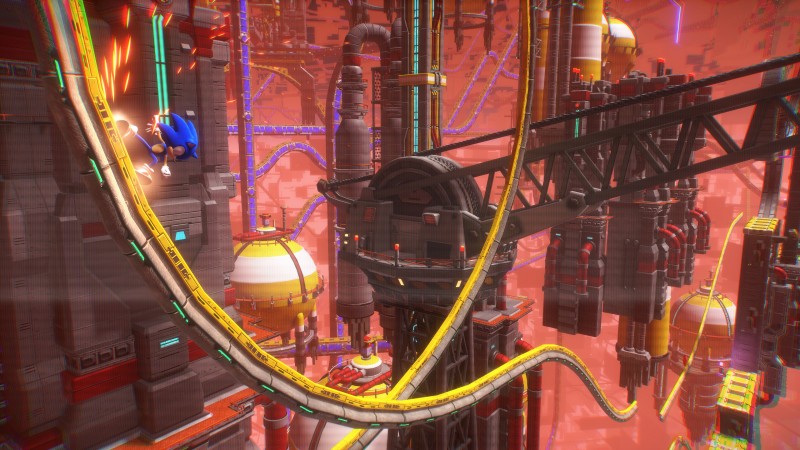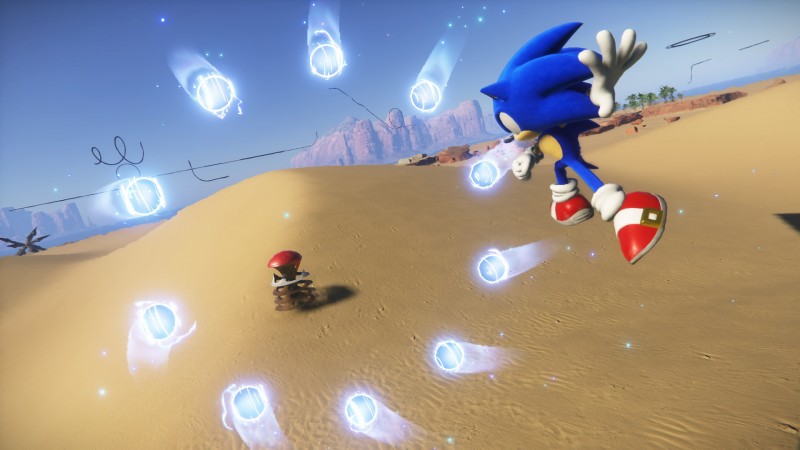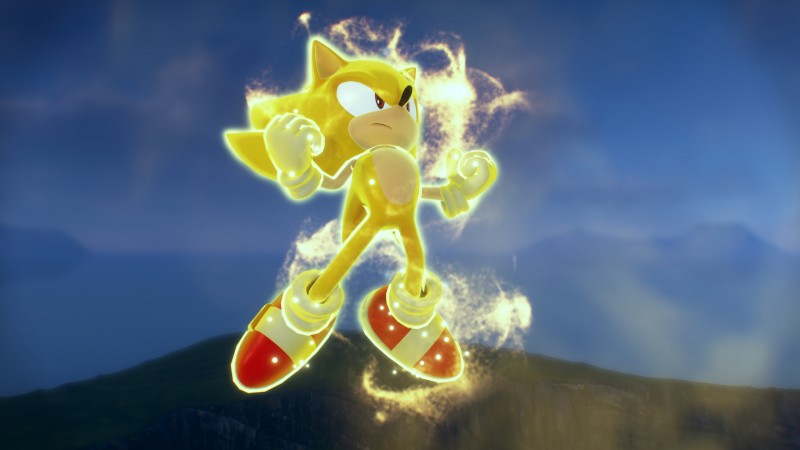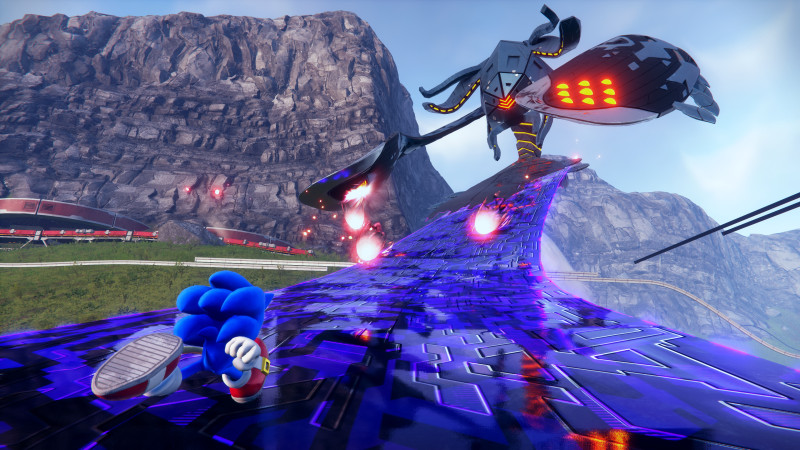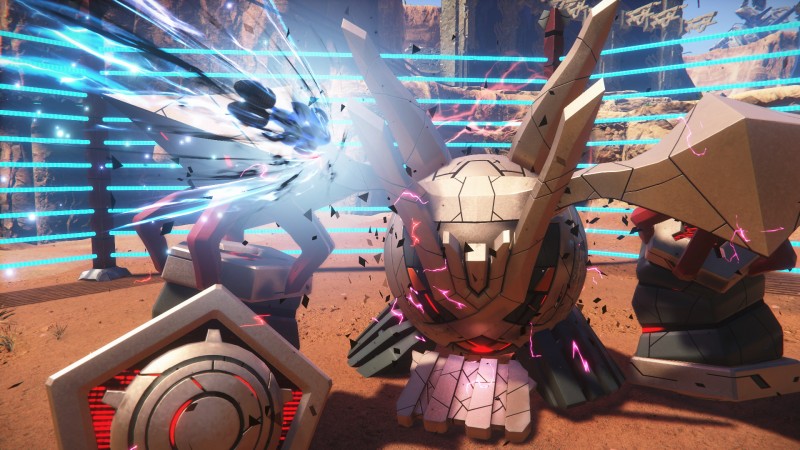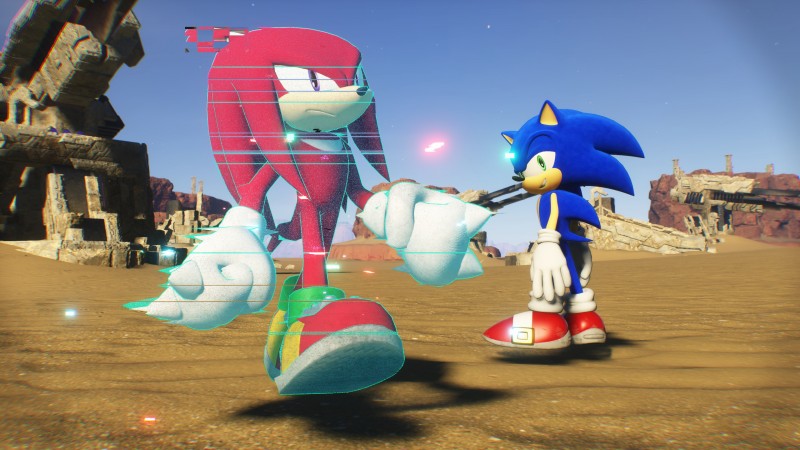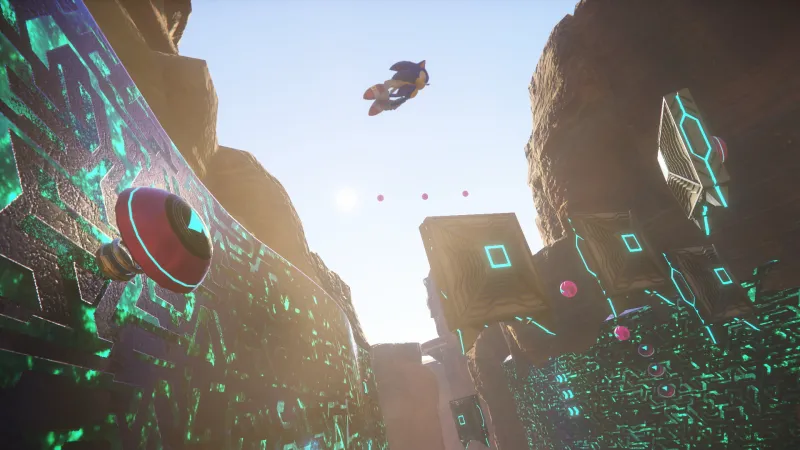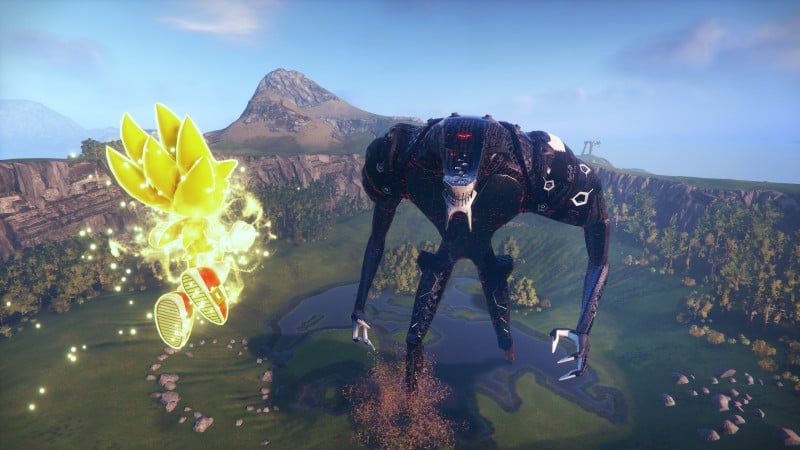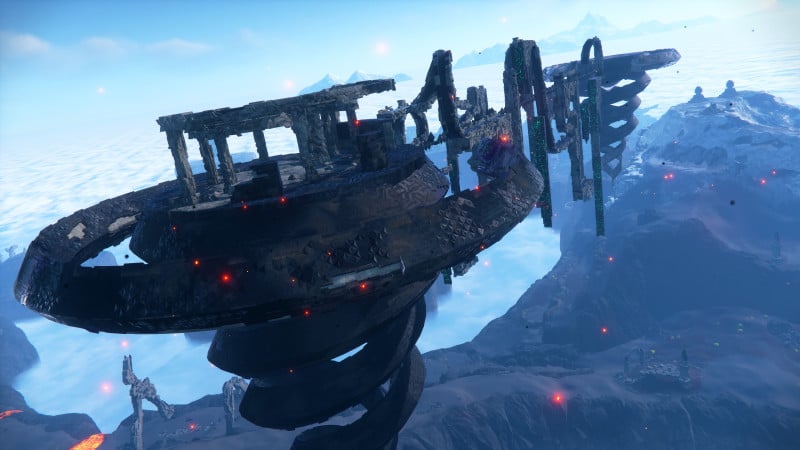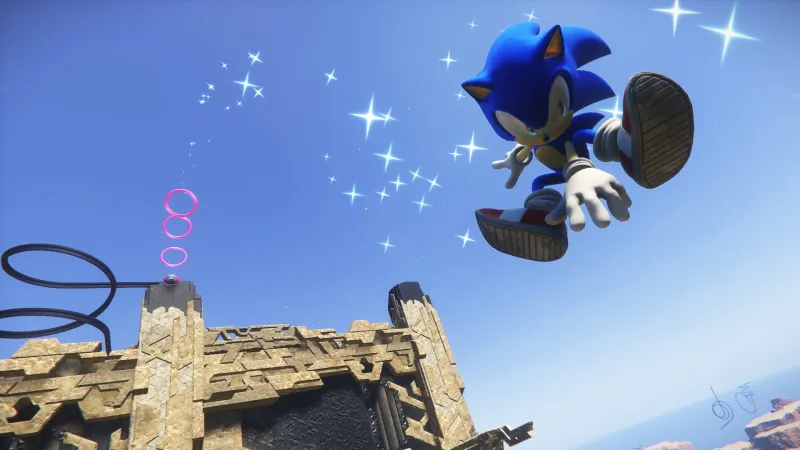
Reviewed on:
PlayStation 5
Platform:
PlayStation 5, Xbox Series X/S, PlayStation 4, Xbox One, Switch, PC
Publisher:
Sega
Developer:
Sonic Team
Release:
November 8, 2022
Rating:
Everyone 10+
In Sonic Frontiers, Sega finds the intersection of the series’ linear past and its “open-zone” future, paying capable service to both eras of the franchise. The open Starfall Islands offer engaging exploration, while linear Cyber Space stages deliver the familiar speed-based Sonic experience. Though each side of the coin has faults, Frontiers is an overall positive experience that serves as a boost in the right direction for the franchise.
Running through the open zones is often a joyful experience. Sonic controls remarkably well as he runs through the lush fields, sandy straights, and other biomes I encountered during my 30-hour playthrough. The islands deliver terrific playgrounds through which Sonic grinds, boosts, and bounces; hitting a dash panel that sends you up a rail, off a spring, and into a line of rings never ceases to satisfy. That satisfaction is accentuated by how good it feels to chain these segments together, thanks to the tight 3D gameplay.
The most notable new ability in Sonic’s arsenal is Cyloop, a blue trail you activate with a push of a button. Cyloop has utility in combat – drawing a circle around enemies deals damage, stuns them, or breaks off armor – but its primary use is in exploration; if ever I didn’t know what to do, the answer was typically to draw a Cyloop around the object in question. You can even run in circles to spawn infinite rings, a method I often used in boss battles. I like this mechanic overall, but reasons to use it in the world sometimes felt shoehorned.
On top of that, several areas of the open zones aren’t optimized for exploration. The in-world obstacle courses are among the worst offenders. I lost track of the number of times I tried to go in one direction, only to hit a dash panel that sent me flying hundreds of feet in the opposite direction before I knew what had happened. This dilemma is further brought into focus by atrocious pop-in, which primarily affects the rails and platforming elements in the open areas, making it difficult to understand the best way to navigate. Other segments force you into a 2D perspective and lock you into a set path until you either complete the sequence or backtrack out of that area. When combined with various dead-ends and areas that feel overtly tucked away, the world design of Sonic Frontiers doesn’t reach the standard of modern open-world games.
Though the open-zone design sometimes lacks cohesiveness, the islands do a terrific job of doling out the core gameplay loop. Exploration rewards you with memory tokens to progress the side-character stories, but outside of lore drops and revealing the map, scouring every corner of an island is rarely as fruitful as I would have liked.
When you’re not sprinting between destinations, Sonic Frontiers gives players the most comprehensive combat mechanics in the series’ history. What starts as button mashing for melee combos evolves as you face new enemies who can counter and block your attacks. As you level the skill tree, you unlock more fast-paced combos to unleash devastating damage on your foes. While the combat is far from the highlight, I enjoyed engaging with enemies when they popped up, and the collectibles and skill points made the encounters worthwhile.
Perhaps the biggest reward, however, comes from defeating enemies and mini-boss Guardians in the open area. These Guardians offer novel battles against a wide range of monsters, offering unique encounters that require you to use different tactics to win. Ranging from creatures that lead you on a chase through the world to a tank that forms a closed arena and shifts the encounter to a bullet-hell experience, I was always excited to see what bosses the next island housed.
Defeating Guardians grants Cyber Space Gears, which let you access the linear, more traditional 3D Sonic levels. These stages concentrate the action into bite-sized chunks, often lasting fewer than a couple of minutes. Each stage features four objectives that grant a Chaos Emerald Vault Key, the main collectible for progressing the main story.
I loved playing the levels over and over to accomplish all these goals; efficiently speedrunning these branching stages is satisfying beyond belief. However, the S-Rank times are poorly balanced, meaning sometimes I would achieve the time on my first attempt, while others are unrealistic unless you nail a perfect run.
The culmination of each island is a massive boss battle against that area’s Titan. Each Titan battle is drastically different, but they all have you facing an impossibly large foe as Super Sonic. Since Sonic’s golden form is invincible but slowly depletes rings, the battles are more about beating the clock than worrying about damage. This dynamic often leads to frustration as their attacks and projectile spam are meant to delay you as you watch your ring count drop. But with music that feels ripped straight out of an anime credits sequence and multi-phase battles that get more climactic with each transition, the epic, over-the-top nature of these battles won me over and provided some of the most memorable moments in the game.
Juxtaposed against the grand scale of these bombastic boss battles, Sonic’s adventure is a largely solitary experience. Save for occasional interactions with his friends and a mischievous A.I. character, our hero goes it alone. This, combined with the minimalistic music score, sets a contemplative tone that I rather enjoyed despite its seeming opposition to the series’ theme of speed.
This tone fits the more somber narrative. The eponymous blue hedgehog is still the same fun-loving speedster. But with a storyline centered around a mysterious species that seemingly befell tragedy long ago, this story is the most mature Sonic has ever been in games, and it largely works. The story features some of the best character moments and contextual callbacks in series history; from Sonic 3 to Sonic Forces, diehard fans will love the passing references the characters make to their previous adventures. I won’t spoil the conversation, but one chat Sonic has with a friend about personal growth is as heartfelt as the franchise has ever been.
Though it’s rough around the edges, Sonic Frontiers is the best 3D Sonic game in years. This first attempt at the open-zone concept is an admirable effort, and I can’t wait to see how Sonic Team iterates on this formula in future entries, but it’s obvious this is not the formula’s final form. For now, Sonic Frontiers stands as a solid first foray into a brave new world for Sega’s speedy mascot.
Score:
7.75
About Game Informer’s review system
Source: Game Informer Sonic Frontiers Review – Into The Wild Blue Yonder


